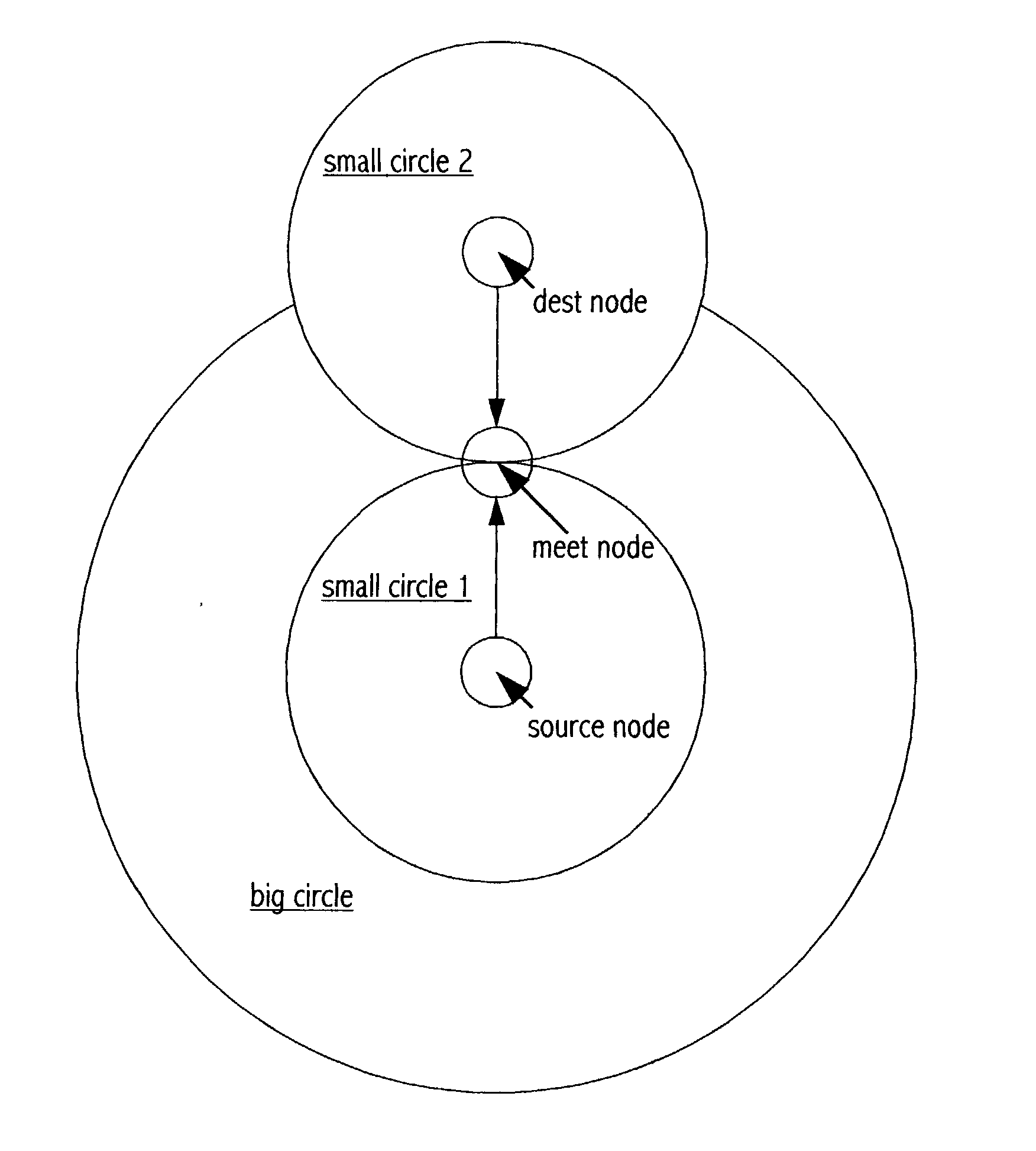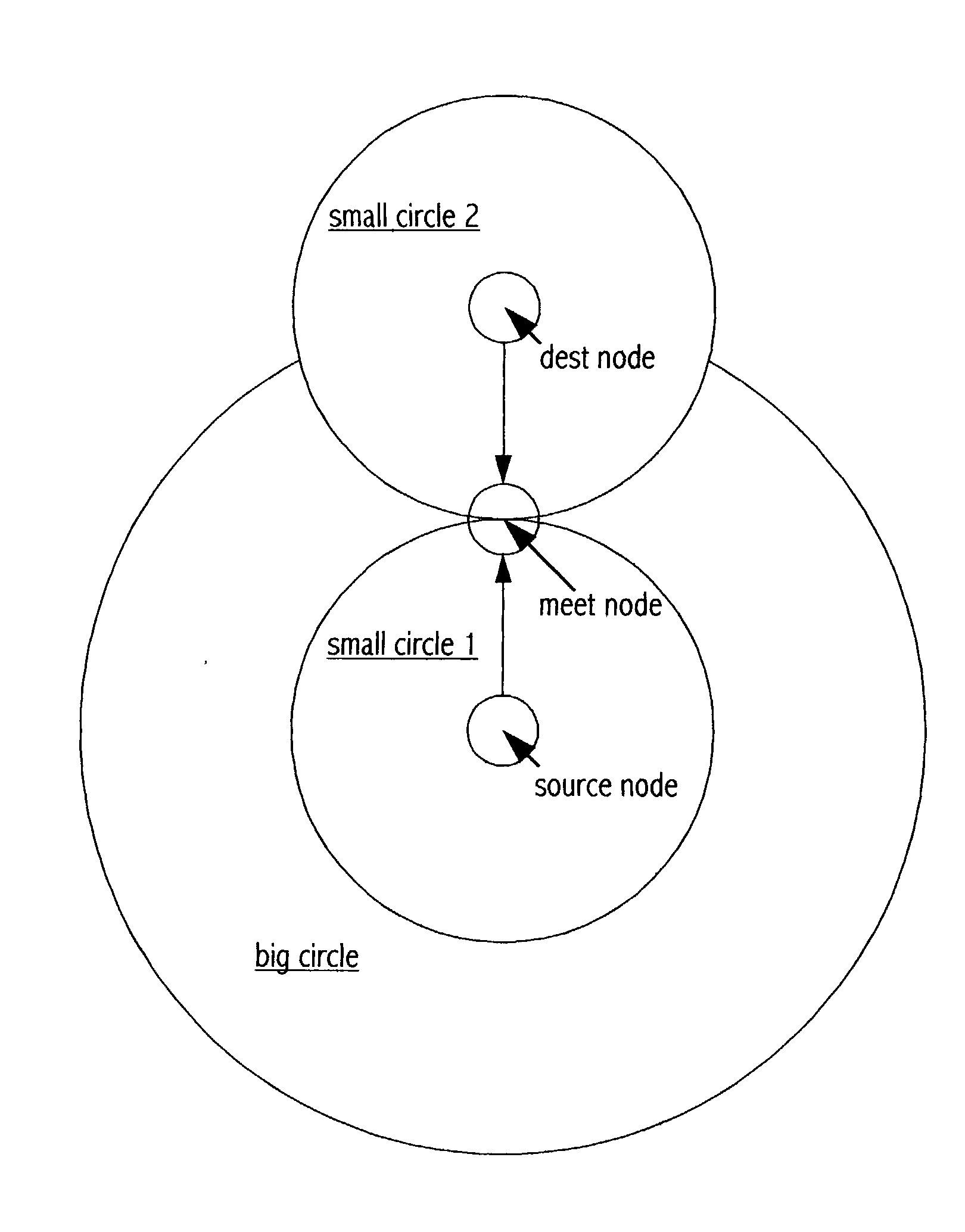Shortest path search method "Midway"
- Summary
- Abstract
- Description
- Claims
- Application Information
AI Technical Summary
Problems solved by technology
Method used
Image
Examples
Embodiment Construction
[0013] Midway shortest path search algorithm may be implemented in different ways. In single processor environment shortest path search from both end nodes is executed in a single task and a single function by alternatively swapping pointers to two separate set of data structures, one for search from source node and the other for search from destination node. In multiprocessor environment path search processes from source node and from destination node may be executed in parallel to further reduce shortest path set up time. In comparison to Dijkstra algorithm Midway requires some additional code overhead as it needs to do shortest path search from both source and destination nodes. In order to avoid the additional overhead from outweighing the benefit Midway algorithm provides, the implementation should minimize the above mentioned code overhead. Detailed description of Midway algorithm is given in two parts one for minimum cost path search and the other for minimum hop path search,...
PUM
 Login to View More
Login to View More Abstract
Description
Claims
Application Information
 Login to View More
Login to View More - R&D
- Intellectual Property
- Life Sciences
- Materials
- Tech Scout
- Unparalleled Data Quality
- Higher Quality Content
- 60% Fewer Hallucinations
Browse by: Latest US Patents, China's latest patents, Technical Efficacy Thesaurus, Application Domain, Technology Topic, Popular Technical Reports.
© 2025 PatSnap. All rights reserved.Legal|Privacy policy|Modern Slavery Act Transparency Statement|Sitemap|About US| Contact US: help@patsnap.com


